HERE’S TO
The story of ACH Group
St Georges Court, Magill. Established


St Georges Court, Magill. Established

ACH Group is a proud South Australian notfor-profit organisation with a rich history of driving change and influencing national aged care policy. At the centre of this effort is an unwavering focus on improving care and support for older Australians.
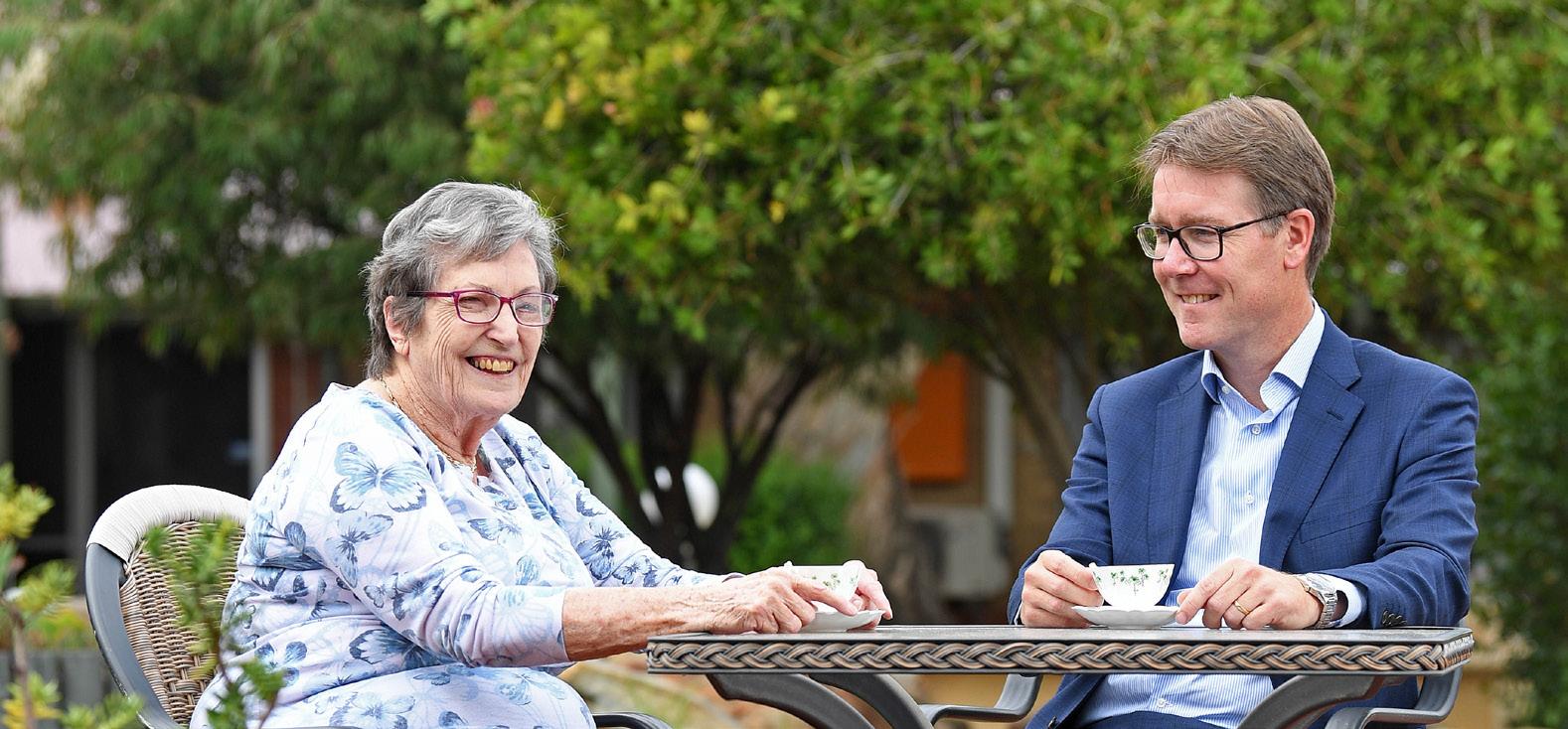
Advancing the interests of older people is ingrained in ACH Group’s DNA thanks to our founder Sir Keith Wilson. His vision to build cottage homes for disadvantaged older people, Veterans and War Widows, influenced the Federal Government to establish the Aged Persons Homes Act 1954.
An innovative mindset has always guided ACH Group, and the other constant is our ongoing commitment to being a purpose-led organisation that supports older people to live good lives. Across the seven decades and today, we continue to reimagine aged care through innovative built forms, service design, and purposeful strategic partnerships that support older people to feel connected to their community, foster optimism and provide an opportunity to maintain current roles or engage in new ones.
Almost everyone will cross paths with aged care services within their lifetime, however, many are apprehensive about seeking support from aged care providers. ACH Group has a proud track record of challenging ageist stereotypes and we continue to be a strident leader in rethinking and normalising ageing, and celebrating the achievements of older people.
It is an absolute privilege to be just the fifth CEO of ACH Group as we celebrate 70 years and embark on a new chapter of aged care in Australia. It is not lost on me that the achievements within these pages are only possible because of past and present staff; volunteers; customers, residents and their families; and the like-minded organisations with whom we have partnered.
I thank everyone who has played a part in ACH Group’s story.
Here’s to 70 years and many more.
Frank Weits CEOThroughout the 19th Century there was fundamental prejudice against older people in Australia. This sentiment was built on the arrival of predominately young migrants and low life expectancy. Older people who could not care for themselves financially were housed in institutions where living conditions were poor. The Destitute Asylum, located off North Terrace in Adelaide, was considered one of the more humane institutions, however an article published in The Advertiser in May 1898 spoke to the apparently ‘joyless lives’ of those living there. The Asylum was also home to people living with disability and mental illness, alcoholics, and young pregnant women.
The increasingly difficult plight of older people sparked the South Australian Royal Commission on the Aged Poor in 1897–98. It found that due to unemployment and poor health, old age had become one of the most significant causes of poverty.

By the turn of the century, Australian states and territories were providing a modest old age pension, however the crisis of older people relying on charity or being forced into institutions continued.
During the World Wars and Great Depression, the difficulties for older people accessing quality services and accommodation were exacerbated. In response to the Great Depression, South Australia’s economy changed from being agriculturally based to having a strong manufacturing sector, which saw more workers relocate to the state. Cheap accommodation for these workers was prioritised over providing housing and services for older people. In 1936 the South Australian Housing Trust was established to build homes for workers.
Corner Grenfell Street and King William Street, Adelaide in approximately 1900. State Library of South Australia, PRG-631-2-1252.
The late Sir Keith Wilson – who would go on to found Aged Cottage Homes (later known as ACH Group) – was a member of the Housing Sub-Committee of the Young Liberal League, the group instrumental in establishing the Housing Trust. Growing desperation and lack of housing for older people led to a sustained public and political campaign in the late 1940s and early 1950s, and in 1953 the Housing Trust began building ‘cottage flats’ for older people.
May
Aged Cottage Homes incorporated. Founder Sir Keith Wilson is named Chair.
November
First three units at Marden Street, Payneham opened.
Heavily influenced by Sir Keith’s work, the Aged Persons Homes Act 1954 came into force.
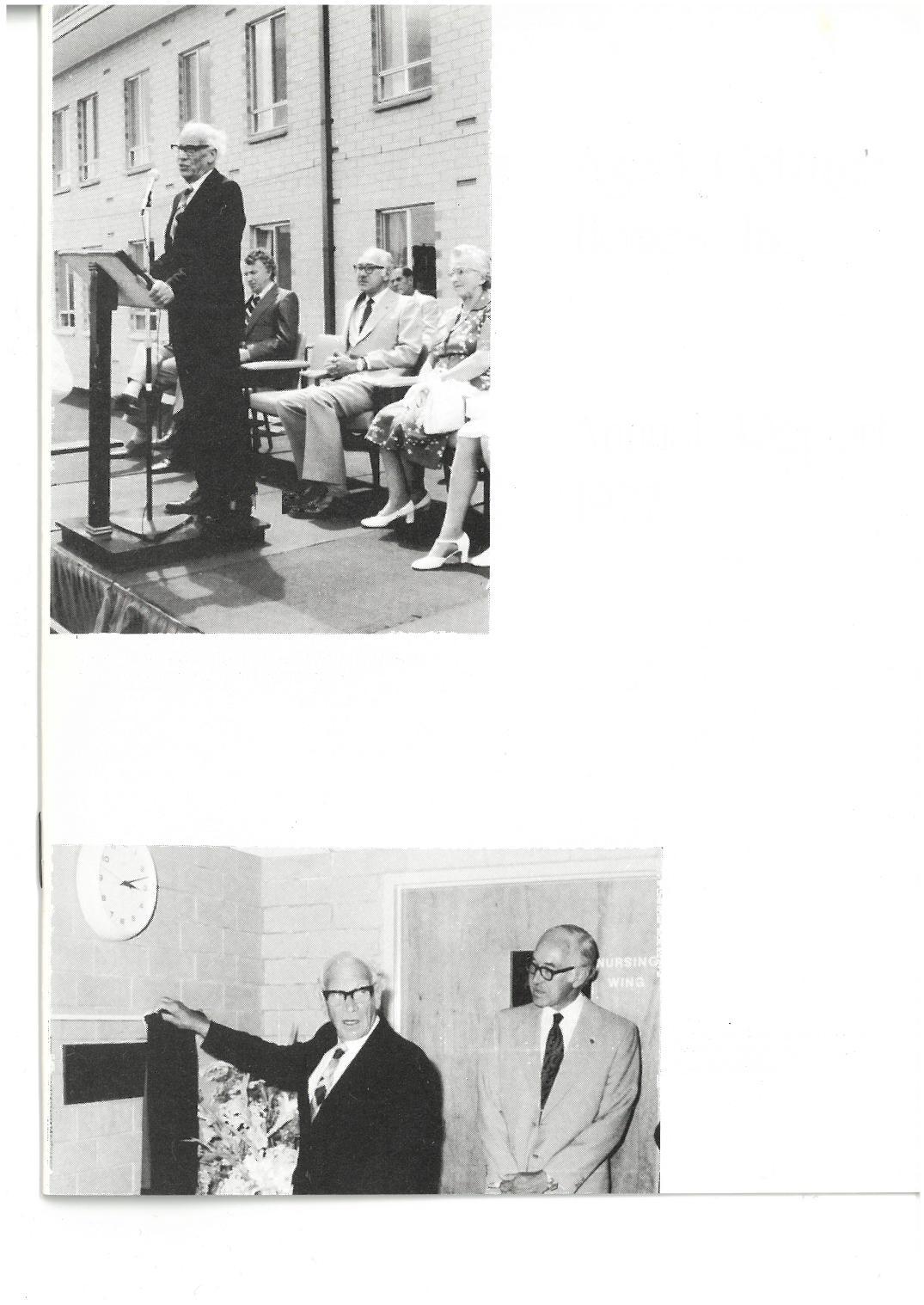
Cottage homes built across Adelaide’s eastern suburbs, under the leadership of Sir Keith Wilson, including St Georges Court, Magill in 1964; James Evans Court, Magill in 1967; and Elliot Court, Campbelltown in 1969.
The South Australian Division of the Australian Red Cross Society transfers Kapara Red Cross Home at Glenelg South to Aged Cottage Homes. $2,600,000 committed to redeveloping the home.
Aged Cottage Homes employs 270 staff, provides accommodation to 1,100 South Australians, and provides rehabilitation and services through Day Centres to 300 people.
Aged Cottage Homes adopts Social Role Valorisation theory as its base values philosophy.
The first computer installed at head office on St Bernards Road, Magill, due to additional administrative and accounting work generated by Perry Park.
Milpara’s renovations informed by ‘roles’ model of care and includes Australia’s first dedicated unit for people living with dementia.
A community services division established with the aim of coordinating and supporting the lifestyle of people living in independent units.
Lawrie Lewis appointed CEO.
Federal Government launches Community Options, Australia’s first version of home care.
Colton Court Residential Care Home opens in McLaren Vale.
1988
Prince Charles and Princess Diana visit the newly opened West Park Residential Care Home in Goolwa.

Partnership with Wyatt Trust established to deliver Wyatt Holidays, an option to respite in residential care.
Aged Cottage Homes leads inaugural national trial of Nursing Home Options, the first version of Home Care Packages Level 3 and 4.
Mike Rungie appointed CEO.
Renamed to Aged Care and Housing Group Incorporated (ACH Group).

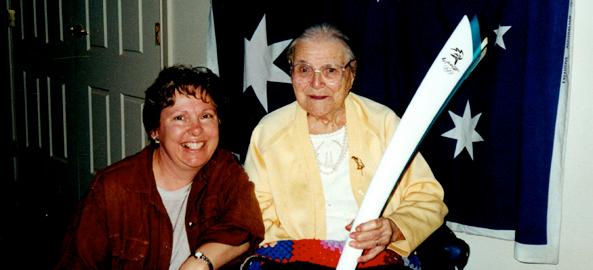
Aged Care Act 1997 introduced. It set out rules for funding, regulation, approval of providers, quality of care and the rights of people receiving care.
Partnership with the Department of Veterans’ Affairs begins with a trial of home care services. ACH Group wins the contract in 2001 to deliver care assessment and coordination for 90% of South Australia’s eligible veterans.
Sydney Olympics are held and the torch visits Colton Court.
Partnership with SA Health established to develop City Views, a unique specialist high level transition service based at Julia Farr Centre.
War Widows’ Guild transfers their properties to ACH Group to deliver retirement living.
The first peer review of services, known as customer impact project, is completed.
Partnership with the City of Onkaparinga is established to deliver home support services.
Opening of Yankalilla Centre, combining residential care and independent living with a primary health care centre and community services.
‘Good Lives for Older People’ is adopted as ACH Group’s purpose.
Standalone catering facility established in Holden Hill.
2008
Partnership with the Cambodian community delivers social support and respite services.

2009
Purchase of Elkanah Retirement Village.
Consumer Directed Care (CDC) trial with 20 customers in Adelaide’s eastern suburbs, the first trial of CDC in aged care.
2010
Head office moves from Halifax Street, Adelaide to 22 Henley Beach Road, Mile End.
Highercombe Residential Care Home in Hope Valley opens.
2014
ACH Group partners with the two oldest and largest Muslim organisations in South Australia – the Islamic Society of SA and the Islamic Arabic Centre – to provide residential and community services.
ViTA, a teaching, residential care home and transitional care offering, opens in Daw Park.
Home and Community Care (HACC) funding arrangements transition to the current Commonwealth Home Support Programme. 2013
ACH Group employs 1,700 staff and 500 volunteers.
New logo and brand identity launches.
Expansion into Victoria with the purchase of two retirement living villages in Melbourne’s eastern suburbs, Bedford Heights Estate and St Thomas Community Retirement Village.
Ray Creen commences as CEO.
South Australian media personality Jane Reilly is named as ACH Group Brand Ambassador.
ACH Group becomes a registered NDIS provider to support people with agerelated neurological conditions such as Parkinson’s, stroke and dementia.

Community Aged Care Packages (CACP) and Extended Aged Care at Home (EACH) Packages transition to current Home Care Packages.
The World Health Organisation declares COVID-19 a worldwide pandemic.
June
Spence on Light, an apartment style retirement living offering in Adelaide’s CBD is completed.
Partnership comprises ACH Group, Housing Choices South Australia, and SA Housing Authority.
Frank Weits speaks at Royal Commission on the benefits of small-scale household design in residential care.
Frank Weits commences as CEO.
Launch of ACH Group’s Connected Communities Strategy.
First Health Studio 50+ opens at Glenelg Oval.
Royal Commission into Aged Care Quality and Safety begins to address issues within Australia’s aged care system to improve the quality of care for all.
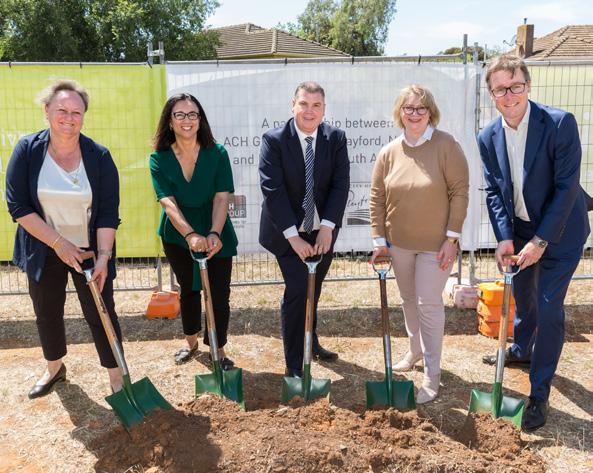

Sir Keith Wilson, the founder of Aged Cottage Homes and a federal politician, had an ongoing interest in housing and services for those less fortunate.

Concerned that older people were often required to pay rent of up to 50 per cent of their pension for inadequate accommodation, and Veterans and War Widows were without housing, Sir Keith met with the Australian Pensioners’ League of South Australia. He suggested that the League campaign for financial assistance to support the building of homes for those pensioners who were in financial distress and in desperate need of housing. The campaign was extremely successful and led to the formation of Aged Cottage Homes, incorporated on 20 May 1952 with Sir Keith as Chair.
In 1952, Aged Cottage Homes launched a further fundraising campaign for £25,000 to build cottage homes for older people, Veterans and War Widows and sought land donations within the Adelaide metropolitan area.
In December of that year, a Mr and Mrs Bird transferred five blocks on Wear Avenue, Marden to Aged Cottage Homes. In November 1953, Aged Cottage Homes purchased further land from Mr and Mrs Bird on Marden Street, Payneham, which would be the location of the organisation’s first homes, now known as Menzies Marden. The foundation stone was laid by Prime Minister Sir Robert Menzies on 14 December 1953, and the homes opened on 23 November 1954. Residents were charged low rents. Prime Minister Menzies grew interested in Sir Keith’s efforts to build
cottage style accommodation for older people as the Federal Government insisted it was preferable for these homes to be built and managed by religious or philanthropic organisations rather than by government.
Sir Keith’s work inspired movement at a federal level with the Aged Persons Homes Act 1954 being introduced by the Menzies Liberal Government. The Act at the time provided grants on a one-for-one basis for organisations to build homes for older people.
In 1971, Aged Cottage Homes hired its fifth employee and first General Manager, the late John Pitchford. It was under John that Aged Cottage Homes would transform from a housing provider to one of Australia’s leading aged care organisations.
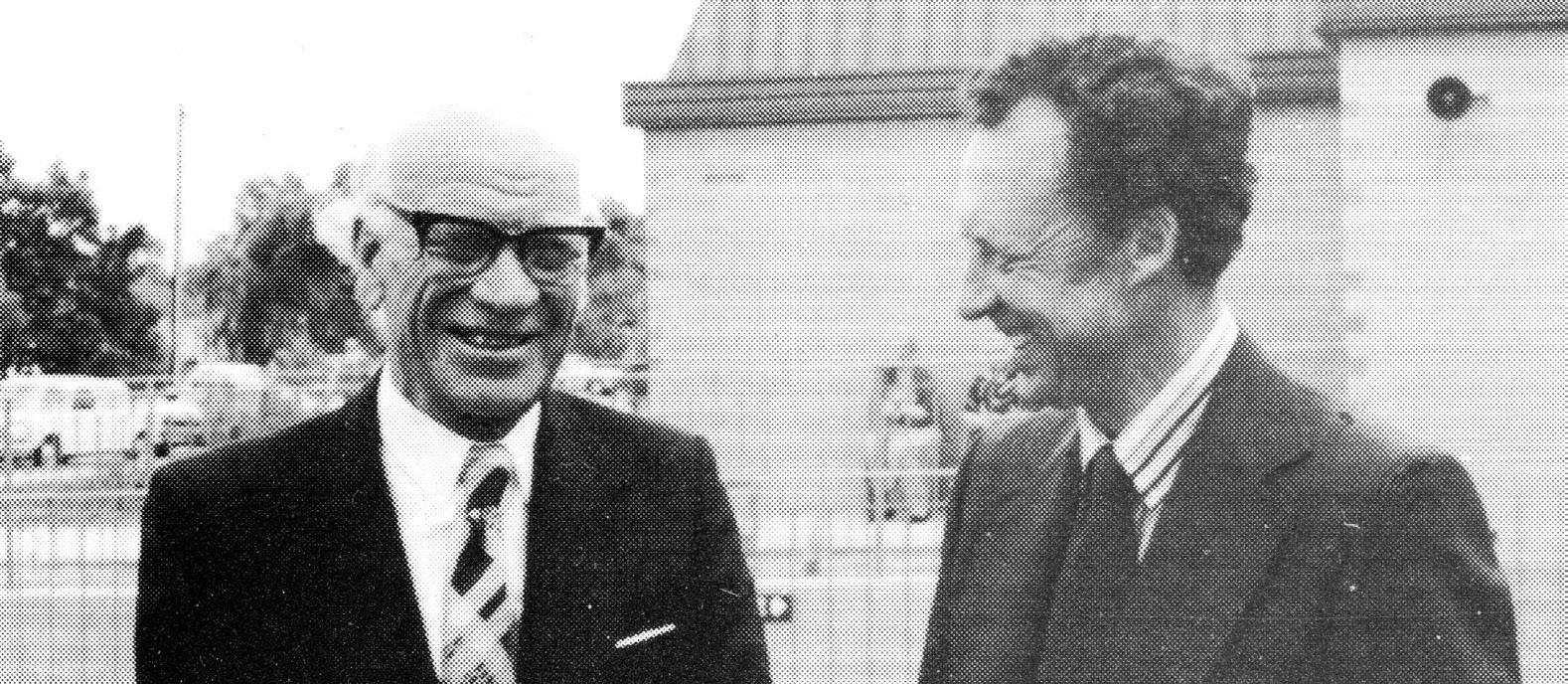
At the time, Aged Cottage Homes held approximately 550 units located mainly within Adelaide’s eastern suburbs. The majority of units had been funded by friends of Sir Keith – the core of the wealth in Adelaide.
As John recalled in an interview in 2018, by 1971 the organisation was making a loss. However, changes to the Aged Persons Homes Act in 1972 introduced financial
help to approved organisations wishing to establish hostels and nursing homes for the aged. At a general rate of $2 paid by the Commonwealth for every $1 raised by the organisations, it prompted an expansion in Aged Cottage Homes services to include hostel accommodation.
John had spent the first months sitting and chatting with residents in their units. With few aged care services and accommodation available such as ‘hostels’, a half-way house between independent living, and ‘nursing homes’ which were for older people with higher care needs, residents told John they were worried about what the future held.
Sir Keith Wilson and John Pitchford at the opening of Milpara nursing home in 1977“Many had been abandoned by their families and had rebuilt their community within the groups of units. When you got up you raised your kitchen blind, and your next door neighbour would know that you were up and okay.”
John PitchfordAfter visiting aged care in Western Australia, John and the Aged Cottage Homes Board completed plans for Milpara, a hostel, nursing home and therapy centre to be built in Rostrevor. The 76-unit hostel was opened in 1974, and the nursing home and therapy centre in 1977.
John recalled that the local council at the time had concerns with the plans for Milpara.
“I put the Mayor and two Councillors in my car and we drove to Ballarat, Victoria to visit an institute. It was like something out of the 19th Century. A huge room with 40 beds each side, without curtains between them. When the council saw our plans, they were very quick to accept them because Milpara was so much different. Right back in those days we deliberately tried to make it as least hospital-like as we could which was quite revolutionary. As it turned out Milpara made a change nationally in the whole concept of aged care, more than what I ever realised at the time.”
The change in approach continued for the next homes that opened: Kapara, which reopened in 1980 after Aged Cottage Homes took ownership from Red Cross, and Perry Park which opened in 1981.
Perry Park’s hostel included individual rooms, communal areas, and a mall where residents could do their shopping, so the home more closely resembled community life.
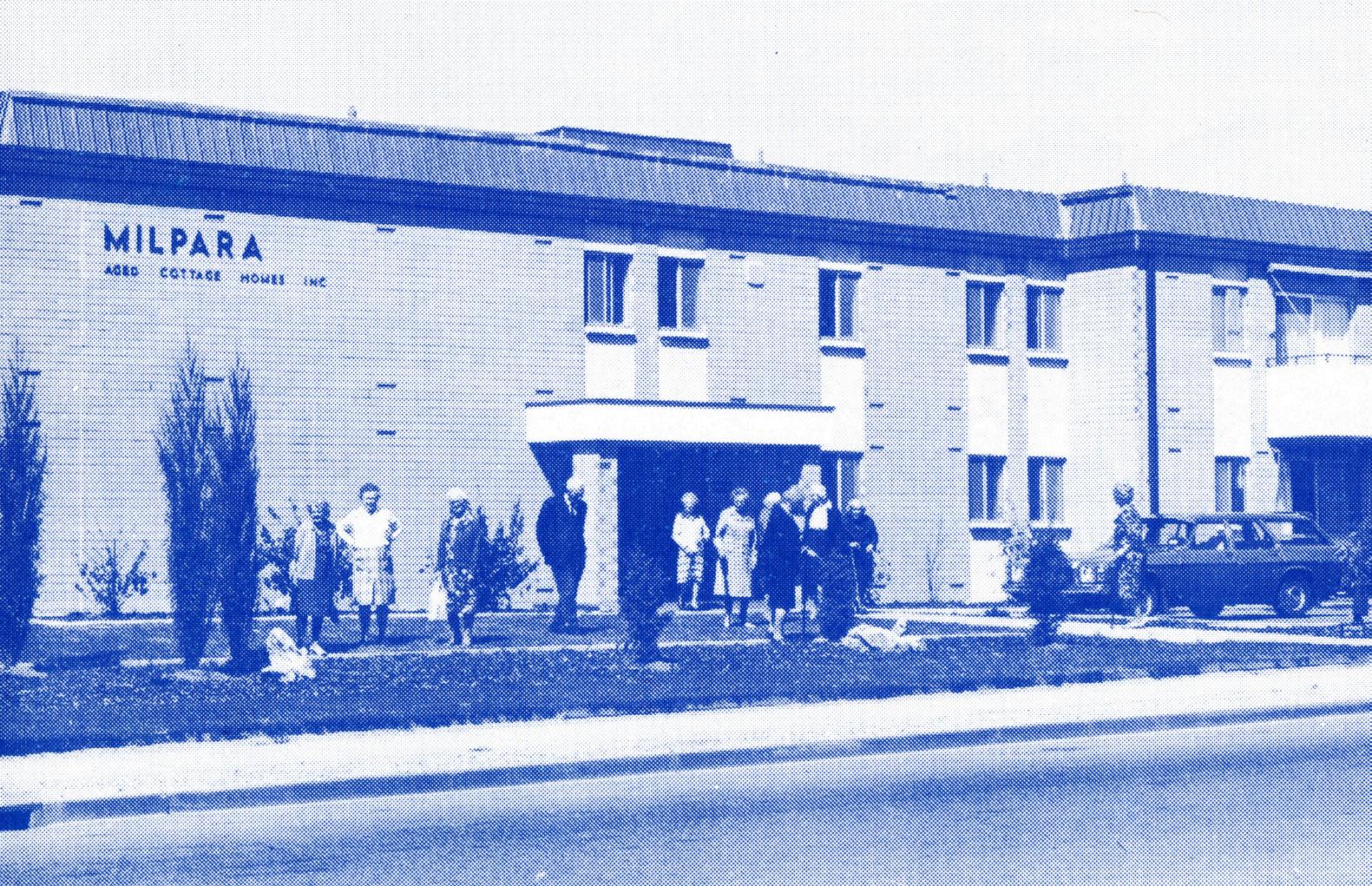
“The 80s was a change period, we pioneered home care but that was only just a natural progression from where we’d been going since 1971. In 1980 Wolf Wolfensberger came to Adelaide. His background was disability, but he talked a lot about valued and devalued people in a culture. All of a sudden what he had to say rang bells, it gave a social science background to the progression that we’d been taking with trying to value the older person, particularly the poor older person.”

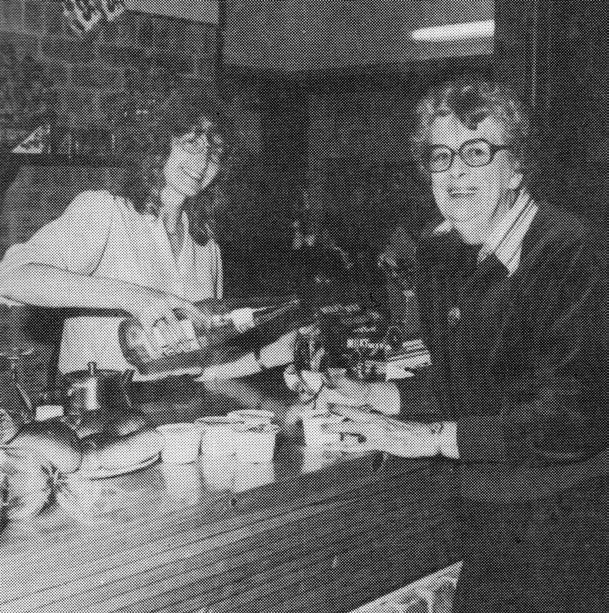 John Pitchford
Kapara in 1978
John Pitchford
Kapara in 1978
In 1980, almost no other aged care organisation in Australia was cognisant of Social Role Valorisation (SRV) theory which would go on to be and remain the bedrock of ACH Group’s purpose and values. While SRV theory had foundations in disability, author Dr Wolf Wolfensberger had always said it applied to ageing.
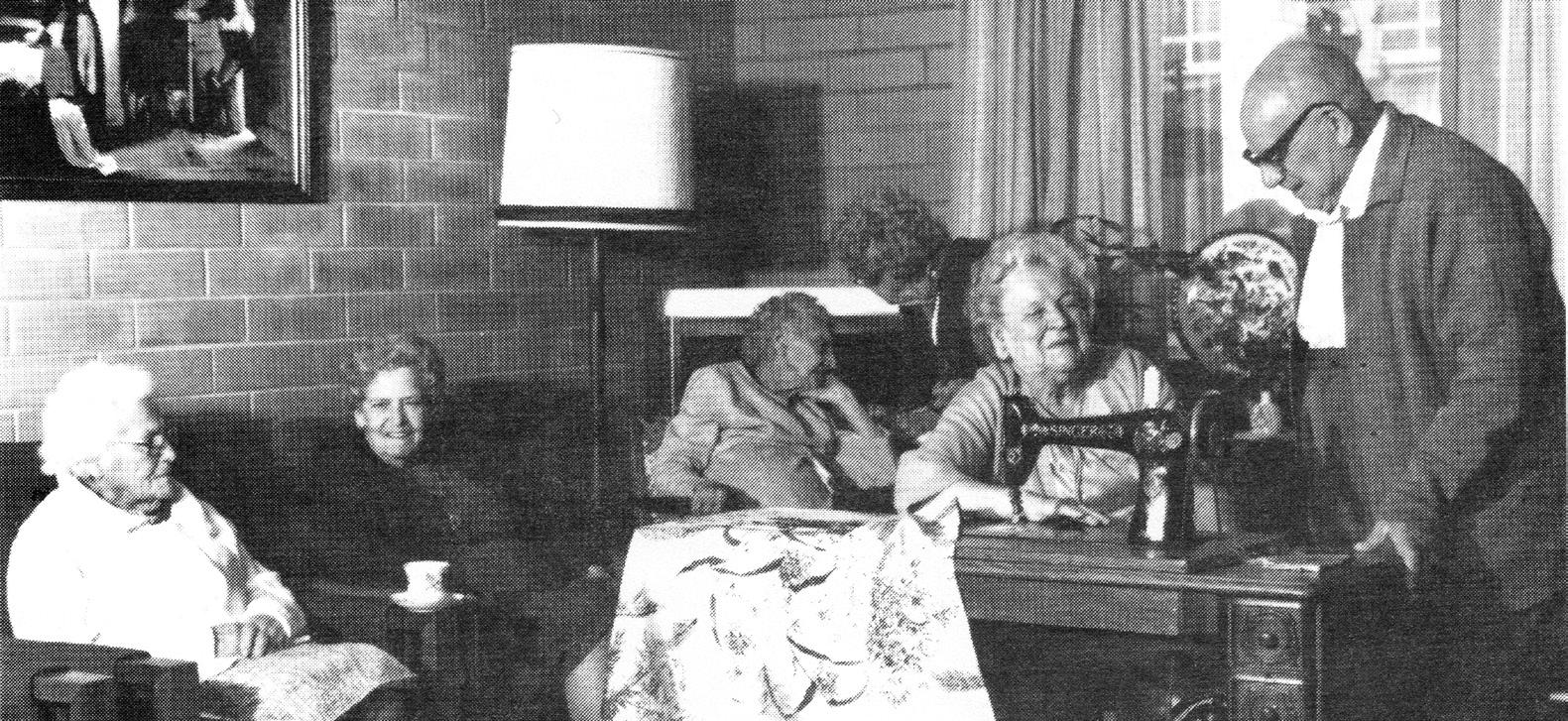
The essence of SRV theory, a complicated and layered concept, is that what matters most in people’s lives is that they continue to have roles that contribute to family, community, and society. Roles are what deliver the good things in life – networks, friendships, personal growth.
Aged Cottage Homes acknowledged that when people age their roles are taken away, particularly when they move into residential care.
Former CEO Mike Rungie, who worked alongside John Pitchford and was employed with ACH Group for more than 30 years, said: “What John did at Milpara was very clever, he implemented SRV theory into the design of home to promote roles. He took spaces that had looked like waiting rooms – like what you see in hospitals – and turned them into kitchens, lounge rooms, sheds, sewing rooms which had functions. There was a definite change in behaviour of residents,
their families, and volunteers. Roles were further created with residents being provided choice, they were given a menu so they could choose their daily meals, asked how they wanted to spend their day and when they wanted medical visits.”
Not only was there investment of SRV theory into the built form, but a purposeful and strong focus on training and coaching staff –especially frontline staff supporting residents and customers – on the importance of roles, real experiences, reablement and right relationships.
Joyleen Thomas, who worked for ACH Group for 40 years including as Values in Action Project Coordinator, said: “We can talk about the good we do until the cows come home… but do we know our impact if we’re not listening to residents, customers and their families? That’s why the customer impact project was created in 2005, using peer reviews of services we understood the actual impact of services on the lives of older people to drive improvement.”
Guided by SRV theory and informed by over 2,000 conversations with older people and validated through research with Adelaide University, ACH Group’s ‘Good Lives Philosophy’ was born in 2006.
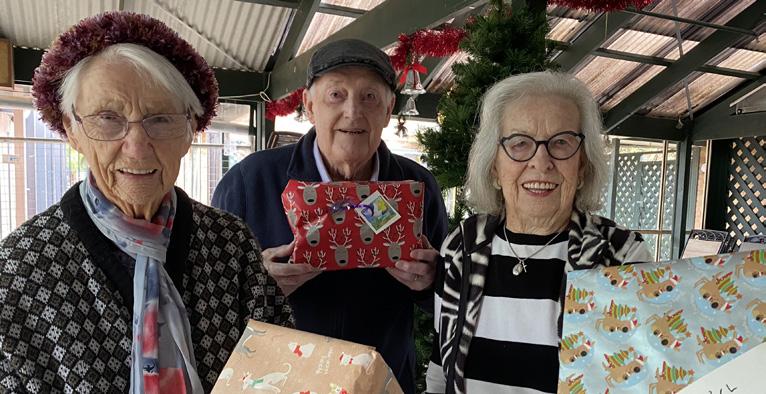
The philosophy identified six key elements of what makes a good life.
“There was a feeling that we needed to formalise our values. We brought in people from outside of the organisation to explore the theory and build the way of thinking for Good Lives,” Joyleen said.
In 2022, ‘Good Lives’ continues to inspire ACH Group’s every move.
Trudy Sutton worked with ACH Group from 2008 to 2021 in several leadership roles with a focus across residential and community care. Trudy said Good Lives was way ahead of the curve in terms of listening to people and acknowledging what they wanted to achieve.
“In aged care there is a tendency to try and protect older people, but that is not a real life. Fifteen years ago, Good Lives was talking about supporting residents and customers to make choices, engaging in experiences that could carry a risk, supporting them to make their own choices. Now this thinking is right throughout the aged care standards.”
 Trudy Sutton
A resident of Milpara hostel prepares fruit tarts for afternoon tea in 1984, highlighting the prevalence of providing residents with meaningful roles
Trudy Sutton
A resident of Milpara hostel prepares fruit tarts for afternoon tea in 1984, highlighting the prevalence of providing residents with meaningful roles
“What struck me moving into the sector was how we were looking at residential care homes – that were only 25 years old – with shared bedrooms and large-scale dining rooms that would sit 60 people – and they were no longer fit for purpose,” Graham Reed said.
Graham, employed with ACH Group from 1985 to 1999, was responsible for developing new residential care homes and retirement living units, and then moved into managing the residential care operations.
“We recognised the losses that people experienced when they moved into residential care homes; they had very little flexibility on when they could get up or the meals they could choose. There was a small group of providers who were wanting to challenge the status quo. ACH Group was part of this and a lot of how we designed the new care homes was on the principles of SRV, enabling residents to maintain valuable roles and minimise losses.”
The fourth care home, West Park, located in the Fleurieu township of Goolwa was built in the mid-1980s.
The development combined the latest thinking in aged care accommodation with a resident’s need for privacy and the importance of maintaining valued roles at the forefront. West Park featured 10 onebedroom cottages and four houses each with 10 single rooms and ensuites, a kitchen and two lounge dining areas.
Graham ReedThe fifth care home, Colton Court, in McLaren Vale opened in 1990, with a 20-person home and 10 one-bedroom units.
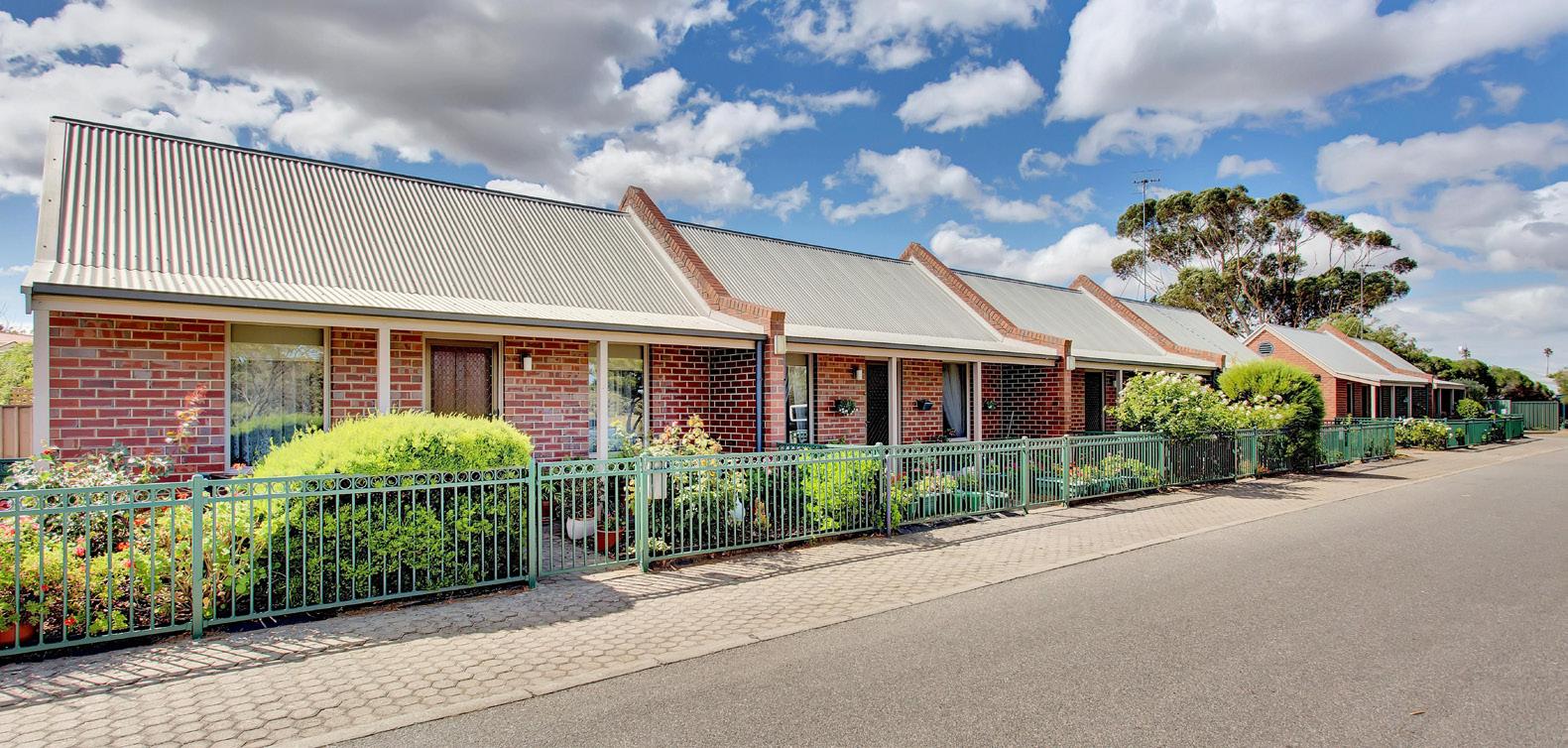
“The design principle for West Park was centred around creating a more home-like and less institutionalised environment.”
Retirement Living units built in First Avenue, Joslin, in 1991. An example of a small-scale development.
“Colton Court had a couple of things that were quite unique at the time. One, it was built by a smaller domestic builder as opposed to a corporate construction company as we wanted a home-like feel. Two, we wanted to ensure that every unit had a front and back door. The front door opened onto the street so visitors could visit whenever they wanted and the back door opened on to the service corridors where all the services – the meals, medication, staff access, cleaning, laundry – came in through. For residents this made it feel more like a neighbourhood where people could drop in and say hello through your front door,” Graham said.

Graham Reed
Residents of Colton Court in the early 2000s. (Top) residents enjoying their private front porch. (Bottom) resident enjoying wood carving.
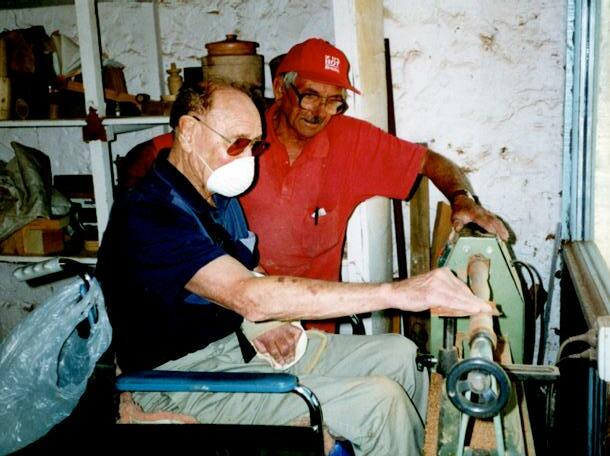
“ACH Group didn’t need to be the biggest, we just wanted to be innovative. This influenced our design of retirement living where we intentionally focussed on building smaller scale developments integrated into the community, close to public transport, amenities and shopping centres, to support residents to continue to live their lives and maintain the roles they had prior to moving in. We were very intentional about not creating gated communities, instead we were focussed on residents maintaining connections outside of where they lived.”

“I recall visiting a gentleman who had moved into a Colton Court unit who was able to maintain an active interest in his professional vocation simply through having enough space in the unit to accommodate his work desk and records.”
By the new millennium, there were updated ideas and factors influencing the design of residential care homes. While the home-like environment remained at the forefront, subtle changes were being made to the design influenced by ACH Group’s reablement approach and the fact Australians were staying at home longer, so the needs of residents moving to care homes had dramatically shifted.
In 2002 Yankalilla Centre opened, followed by Highercombe in Hope Valley in 2010, and ViTA in Daw Park in 2014.
Trudy Sutton said: “We were looking at additional space in resident’s rooms to increase accessibility, there were smaller communal dining areas, we brought the outside in with easily accessible gardens built within the home’s layout, and internal and external gyms were a necessity. To further remove the home from a hospital setting, no handrails were installed in either Highercombe or ViTA.”
Current ACH Group Chair Mary Patetsos said: “The new millennium heralded ACH Group’s new partnerships with the
health and education sectors. At Yankalilla we partnered with the local medical practice and at ViTA we brought aged care, health, teaching, and research together with an innovative partnership comprising ACH Group, SA Health and Flinders University.
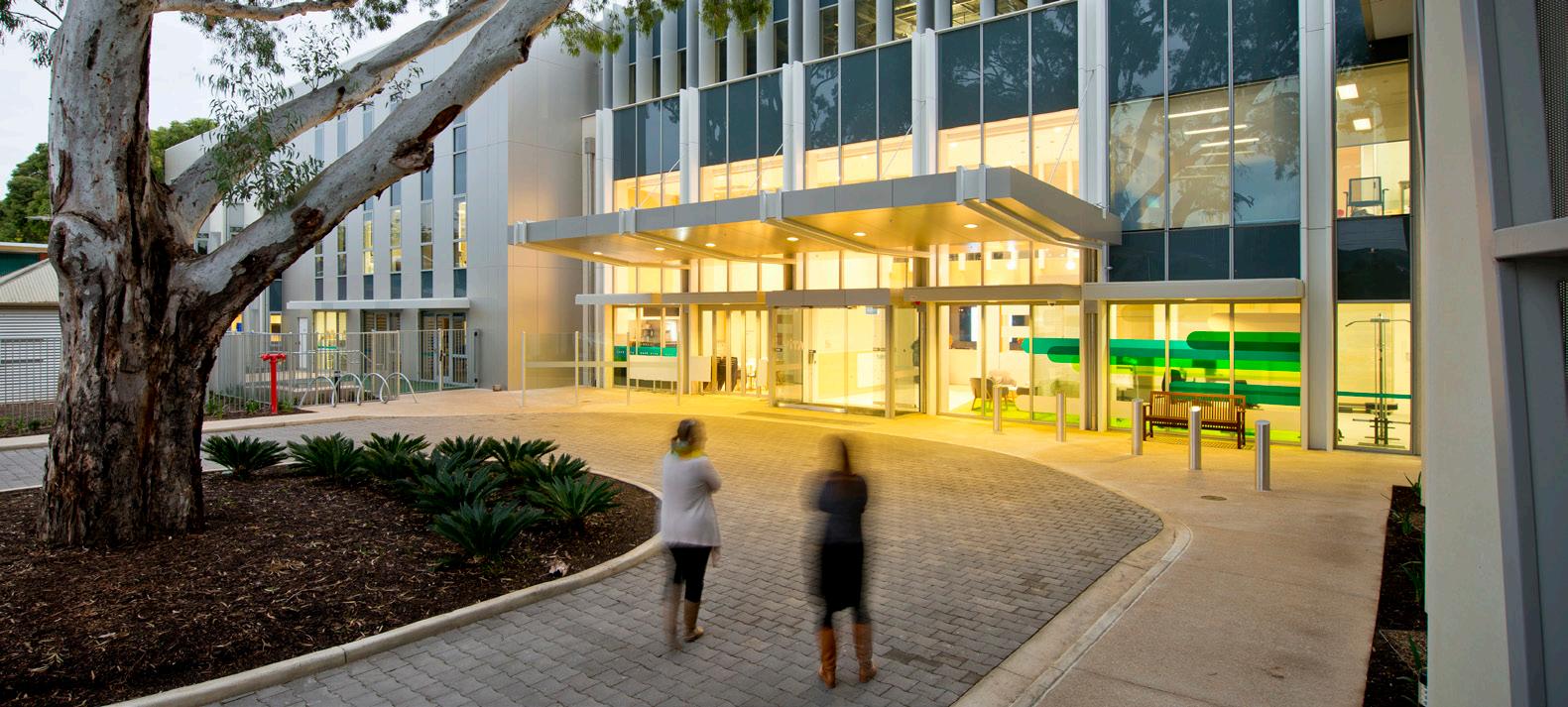 Mary Patetsos
Mary Patetsos
“ViTA’s unique combination of partners, health co-location, innovative services, education and research made it a national first in aged care and has greatly influenced the design and partnerships of ACH Group’s ninth care home, Healthia.”
“ViTA not only reimaged aged care and provided the future workforce with opportunities to experience aged care firsthand, but supported the state’s hospital system in providing care to patients transitioning from acute care back into their homes.”
Bronwyn Harding, who has worked at ACH Group since 1983, said: “By the 80s older people were saying loudly that they wanted to remain in their own homes instead of moving into residential care.”
At the time, Day Centres – funded by the Commonwealth Government – were available for those living at home to come in for a day and receive a range of services, a large proportion of which weren’t chosen by them. Aged Cottage Homes had Day Centres connected to Perry Park, Kapara and Milpara.
Mike Rungie said: “It was in the early 80s we were investigating the application of SRV theory in the support of people living in their own home, and the Federal Government was reviewing home care in Australia. Aged Cottage Homes sent its leaders overseas to look at the impacts of SRV theory in caring for people living in their own home. Now, one of those trips discovered a program in Wisconsin, it was so simple – but was radical at the time – as they allocated a budget to people who were living in their homes and they could choose their own services.”
On return, Aged Cottage Homes met with Commonwealth Government representatives, and they were interested in the program.
In 1984, leaders from America and the United Kingdom, the Commonwealth Government, and Aged Cottage Homes undertook a national training tour educating aged care providers on Community Options. It would become Australia’s first Commonwealth funded home care program.
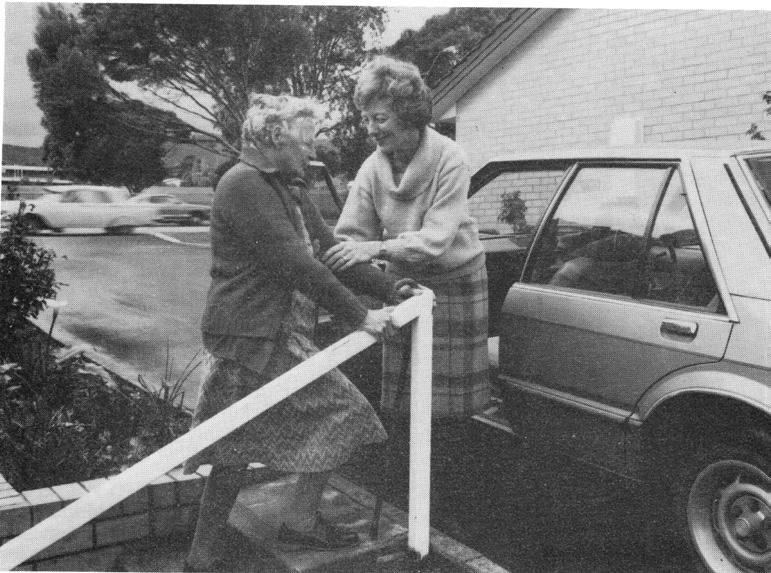
ACH Group continued to be at the centre of innovation and change in Australia’s home care landscape. In 1995, it led the national Nursing Home Options trial, which converted 35 places at Milpara to community care and saw residents returning to live in the community. This was essentially the precursor to today’s Level 3 and 4 Home Care Packages.
In 2009, the Commonwealth announced that it was moving to Consumer Directed Care (CDC) in two years’ time. Mike Rungie said: “ACH Group immediately set up and funded its own CDC trial, an approach that put the consumer in control of how their government subsidy was spent, and we published the results nationally. We collaborated with the customers on what would make the biggest difference in their lives.”
Throughout the 80s to the early 2000s, community health services were made available through Day Centres which were almost always linked to residential care homes.
“There was a movement for more services to be delivered in a community environment and the ‘Day Centres’ started to locate themselves at community locations, for example Milpara went to Montacute Road, Newton, and Kapara to Brighton Road, Glenelg,” Barbara Tainsh, an employee of ACH Group since the early 90s, said.
Innovation was again seen in ACH Group’s health offering in 2007 with it being one of the first aged care providers in South Australia to employ an Exercise Physiologist to specialise in exercise prescription and chronic disease management.

The prominence of older people seeking health services was influenced by the introduction of the Commonwealth Home Support Programme in 2015 which had
a focus on customers seeking services in the community, coupled with the growing awareness by customers of the importance of staying physically active.
“A driving force around the expansion of the Health Studio 50+ locations is that people are wanting to stay healthy, active and mobile, and realising that exercise is a great way to help achieve this. Our health service offering has increased, we provide a much wider range of services including wellness classes, exercise programs on state-of-theart HUR gym equipment (some of the first in the state), allied health and massage –providing a holistic approach to achieving a customer’s best health,” Barbara said.
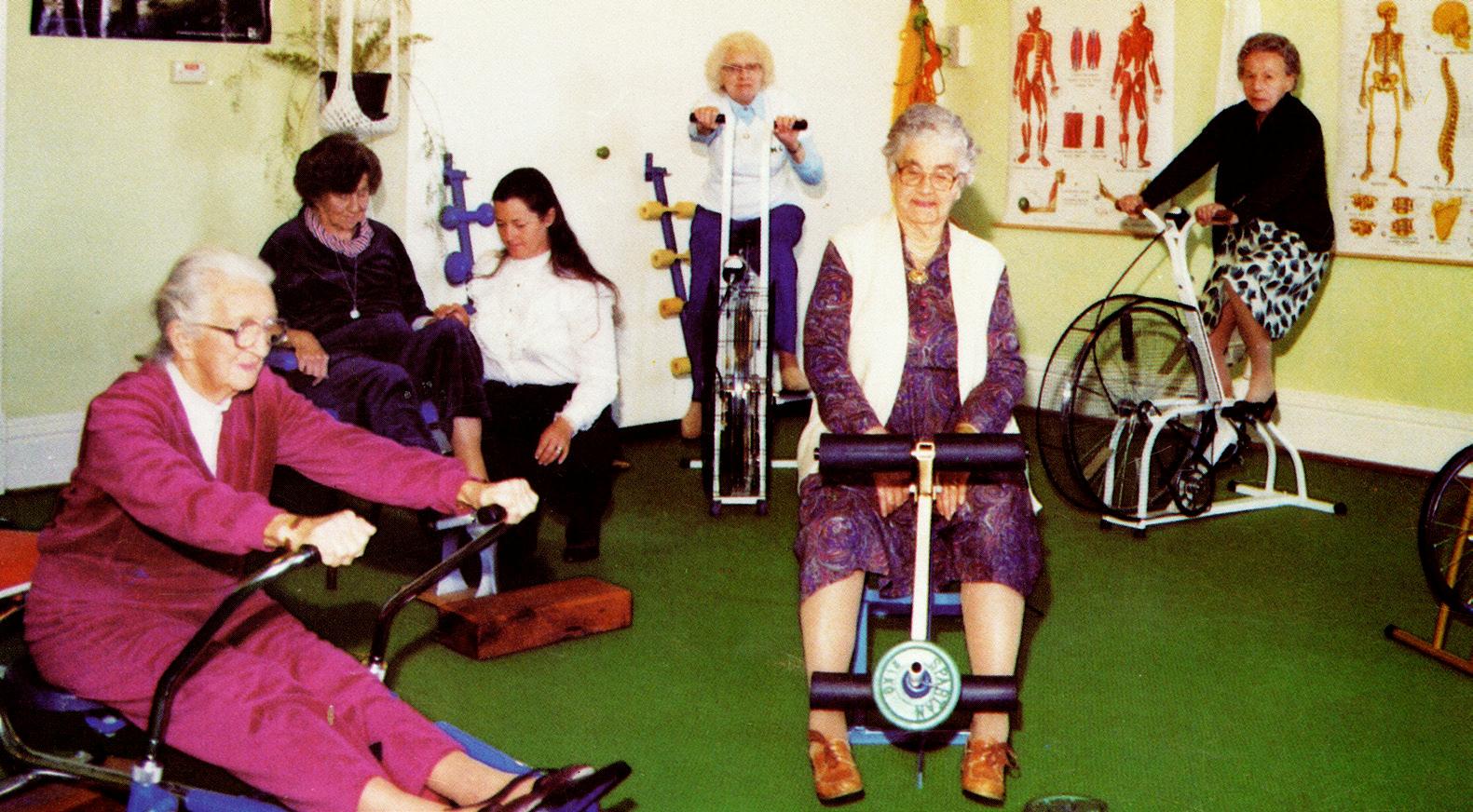


Where activities were once provided through Day Centres for entertainment purposes, the social program at ACH Group has evolved significantly.
In 2019, work was undertaken to ensure that social experiences not only supported customers and residents to engage in a social setting and create connections, but that a range of unique programs would provide participants with opportunities to take on new roles, learn new skills and pursue interests and passions.
Examples of these unique programs include the Sing for Joy Choir, which has performed at Adelaide Fringe, art classes and golf lessons led by professionals in their fields. Partnering with reputable organisations to enhance social experiences has also featured heavily.
(Top) A customer at the Milpara Day Centre in 1983. (Middle and bottom) Sing for Joy choirs and Art in Focus classes are a key feature of the current social experiences available.

In late 2022 as the world emerges from the pandemic, the implementation of reforms brought about by the 2019 Royal Commission begins.
“Aged care in Australia is undergoing the most significant reform in a generation, especially in funding models for residential care, and the streamlining of Home Care Packages and the Commonwealth Home Support Programme into a singular program. Aged care providers, together with the Federal Government and peak bodies, are dedicated to making meaningful improvements to the sector. I hope to look back in 10 years’ time and see that the changes our current workforce are a part of made a real difference,” Mary Patetsos said.
A new ACH Group brand campaign challenges typical aged care advertising
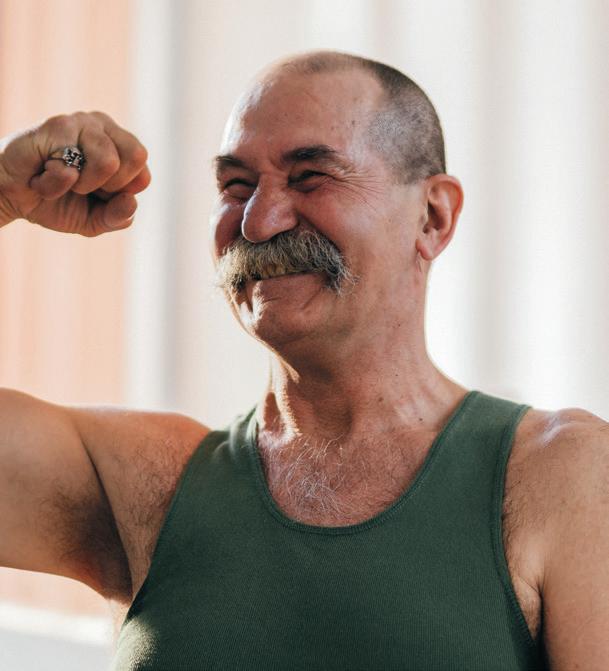
“Linked with the future are the changing needs of older people, especially as we see more Baby Boomers, who currently make up more than 20% of Australia’s population, engaging the support of aged care services. The Boomer generation will drive digitalisation of services, have a greater desire to stay at home, and place a larger emphasis on exercise opportunities, wellness support and travel excursions as they age.”
2022 marks the fourth year of the Connected Communities strategy that is focussed on ACH Group partnering with people, communities, reputable like-minded organisations, businesses, and tertiary institutions to remove barriers and create opportunities and social connections for older people to improve their health and wellbeing, have real experiences, build strong relationships, take on new roles and challenges.
Connected Communities also supports ACH Group developing integrated community hubs, where health/wellbeing services, retirement living, and residential care are all within the same geographical area. This builds a supportive community where older people have a range of services on their doorstep to support them to live and age well.
Healthia, a residential care home and health and education hub which is co-located with a University of South Australia general practice and student-led health clinics, is currently being built in Elizabeth Vale and is due to open in mid-2023.
Construction taking place for Healthia, ACH Group’s ninth residential care home, in Elizabeth Vale

“Healthia features best practice small-scale household design. The Royal Commission found this design is currently the best model for residential care as it is shown to increase quality of life for residents, especially people with dementia. To further our understanding staff have travelled overseas to see the model of care in place. Furthermore, we have learnt from the COVID pandemic to implement best practice infection control measures.
“Healthia showcases a powerful cross-sector partnership between ACH Group, the University of South Australia, Northern Adelaide Local Health Network, and the City of Playford. Partnerships like this, where there is not only synergy to each organisation’s individual strategy, but the collaboration enhances the services and care for older people, have been evident through our history.”
Mary Patetsos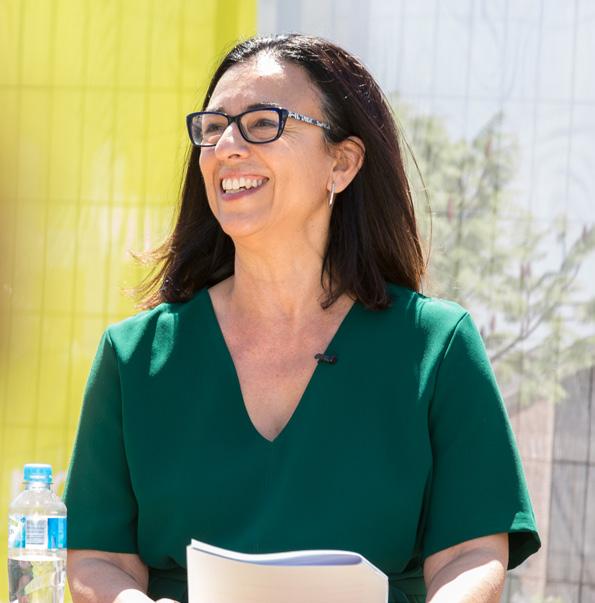
ACH Group Chair Mary Patetsos 2018 – Present
ACH Group acknowledges the contributions of Barbara Tainsh, Bronwyn Harding, Caroline Gliddon, Ella McDougall, Graham Reed, Ivy Diegmann, Joyleen Thomas, Lauren Bobrige, Mike Rungie, Mary Patetsos, and Trudy Sutton in creating this history booklet. Thank you to Jo Mitchell (@jo_at_home) for her front cover illustration.
Information was sourced from interviews, Aged Cottage Homes/ACH Group annual reports and media articles.
ACH Group is a not-for-profit community organisation promoting opportunities and services to support good lives for older people since 1952.
Let’s talk 1300 22 44 77 Visit achgroup.org.au